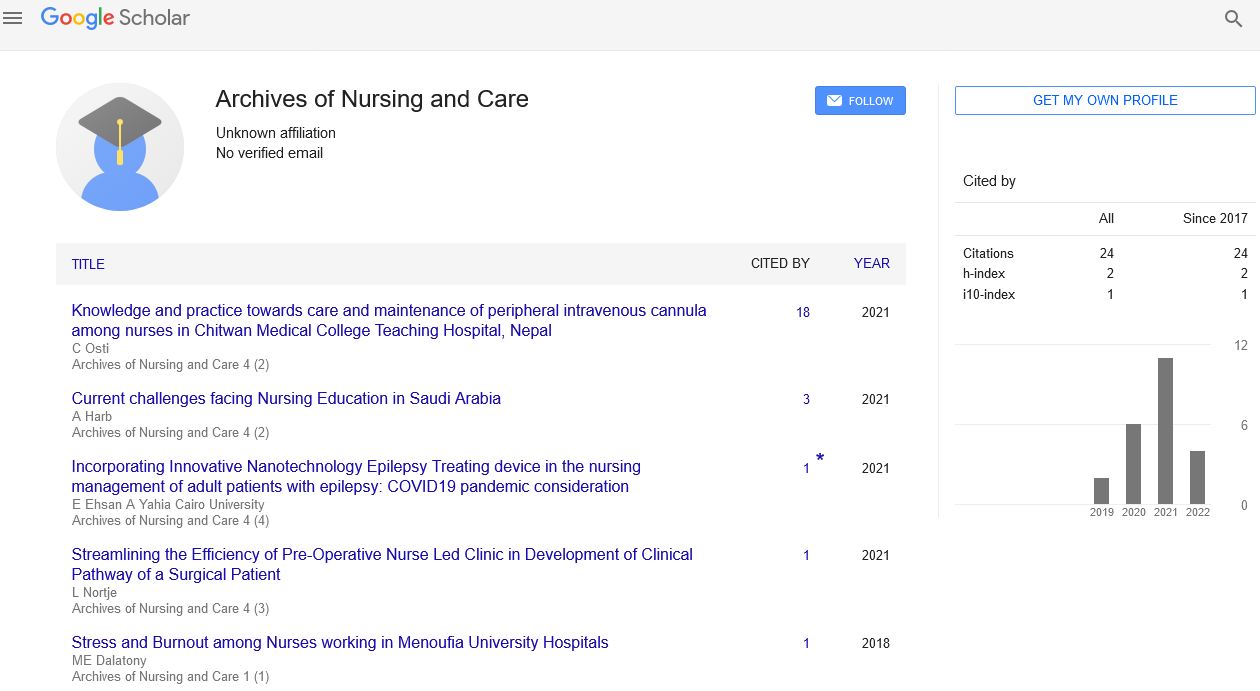Perspective - Archives of Nursing and Care (2022) Volume 5, Issue 6
A Note on the Public Health and Nursing
Christine Savage*
University of Cincinnati College of Nursing, 3110 Vine St., Cincinnati, OH 45221, USA
University of Cincinnati College of Nursing, 3110 Vine St., Cincinnati, OH 45221, USA
E-mail: christine.savage@uc.edu
Received: 02-May-2022, Manuscript No. oanc-22-55013; Editor assigned: 03-May-2022, PreQC No. oanc-22- 55013(PQ); Reviewed: 16-May-2022, QC No. oanc-22-55013; Revised: 23- May-2022, Manuscript No. Oanc-22- 55013(R); Published: 30-May-2022 , DOI: 10.37532/oanc.2022.5(6).54-55
Abstract
Promoting the health of the public requires multiple strategies aimed at improving the environment, the health knowledge of groups and individuals, maintaining adequate food and water, and reducing the spread of disease. Many disciplines are needed to meet these goals, but the largest segment of the professional health work force required to meet these needs is nursing. Historically, nursing leaders in public health such as Florence Nightingale and Lillian Wald made significant inroads related to serious health issues because they were nurses. Today across the globe, nurses provide the key components of public health interventions including well baby care, health education, screening and immunization clinics, disaster management and emergency preparedness. With the growing nursing shortage in acute care settings, the brain drain of nurses from certain areas of the world, the shrinking public dollars for preventive health care, the nursing workforce needed to continue to provide these essential health care services is threatened. Promoting the health of the public requires multiple strategies aimed at improving the environment, the health knowledge of groups and individuals, maintaining adequate food and water, and reducing the spread of disease
Keywords
chemotherapy• radiation
Introduction
The Future of the Public’s Health defined public health as what society does collectively to assure the conditions for people to be healthy [1]. This definition builds on the classic definition of public health proposed by C.E. Winslow in 1920, which indicates that public health is the science of preventing disease, prolonging life and promoting health through organized community efforts. Since Florence Nightingale, nursing has been an explicit part of the planning, evaluation and implementation of actions taken to meet the goals of public health. The continued efforts needed to improve the health of populations and communities require not only an appreciation of the role nurses have played in the past, but a clear explicit commitment from both the nursing profession and the field of public health science that nurses, the largest segment of the professional health care workforce are key to the success of meeting public health goals across the globe [2]. Professional nurses are being called to deliver the vaccines against this global threat and most importantly to provide the needed education to the public to prevent the spread of the disease. School nurses in fact were essential in the detection of the virus, helping to abate the initial spread of the disease.
Description
Nursing and public health can be traced back to the modern founder of the nursing profession [3], Florence Nightingale, a recognized early pioneer in epidemiology.
Prevention and public health science. She developed a system of training for nurses that changed nursing from an ill-defined job with no consistent method of entry to a true profession with a clear educational foundation required for entry into the profession. She also advanced the science of public health through her work on sanitation, surveillance and her dedication to social reform. She shed light on the dismal conditions related to the health care available to the sick poor as well as their living and working conditions [4]. The role of the nurse in prevention was not only emphasized in Britain but in the United States as well. In the early part of the 20th century in the United States, nursing and public health joined forces. Christine provided leadership to nursing when she founded the Henry Street Settlement located in New York City. The work of the Henry Street Nurses was to directly address the multiple causes of illness and also to create demonstration projects for purpose of preventing illness. Wald believed that treatment of illness by nurses required that they also treat social and economic problems that contributed to the illness. The work of these nurses and others like them contributed to the decline of infectious diseases such as tuberculosis long before modern medicine was available. Wald is remembered for not only coining the term “public health nurse” but also providing a paradigm of holistic practice emphasizing multiple determinants of health and the importance of the environment in influencing health outcomes [5].
Acknowledgement
None
Conflict of interest
No conflict of interest
References
- Winslow CEA. The untilled field of public health. Modern Med. 2, 183-191(1920).
- Harkness DE. A view from the streets: women and medical work in Elizabethan London. Bull. Hist. Med. 2008, 82, 52-85(2008).
- Abrams SE. The best of public health nursing, circa 1941. Public Health Nurs. 25, 285-291(2008).
- Bennett C, Perry J, Lawrence Z et al. Promoting health in primary care. Nurs. Stand.23, 48-56(2009).
- Quickfall J , Pollock L. Community nursing: redesign in Scotland. Brit. J. Community Nurs., 13, 373-377(2008).

